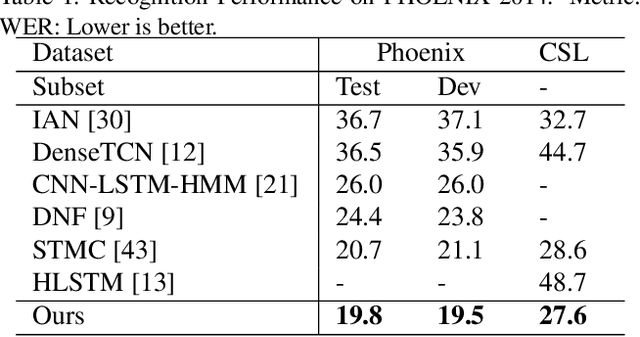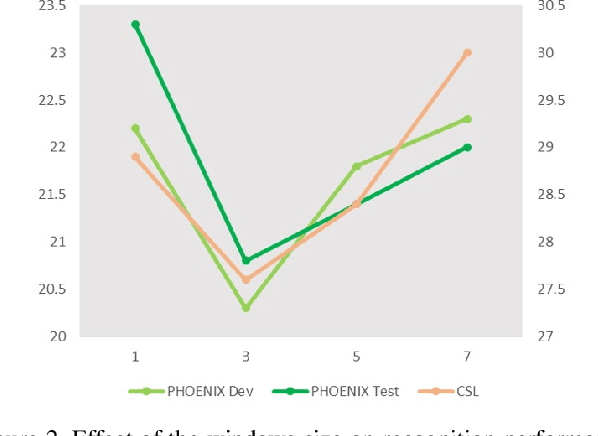Sign Language Translation with Hierarchical Spatio-TemporalGraph Neural Network
Paper and Code
Nov 14, 2021



Sign language translation (SLT), which generates text in a spoken language from visual content in a sign language, is important to assist the hard-of-hearing community for their communications. Inspired by neural machine translation (NMT), most existing SLT studies adopted a general sequence to sequence learning strategy. However, SLT is significantly different from general NMT tasks since sign languages convey messages through multiple visual-manual aspects. Therefore, in this paper, these unique characteristics of sign languages are formulated as hierarchical spatio-temporal graph representations, including high-level and fine-level graphs of which a vertex characterizes a specified body part and an edge represents their interactions. Particularly, high-level graphs represent the patterns in the regions such as hands and face, and fine-level graphs consider the joints of hands and landmarks of facial regions. To learn these graph patterns, a novel deep learning architecture, namely hierarchical spatio-temporal graph neural network (HST-GNN), is proposed. Graph convolutions and graph self-attentions with neighborhood context are proposed to characterize both the local and the global graph properties. Experimental results on benchmark datasets demonstrated the effectiveness of the proposed method.
 Add to Chrome
Add to Chrome Add to Firefox
Add to Firefox Add to Edge
Add to Edge